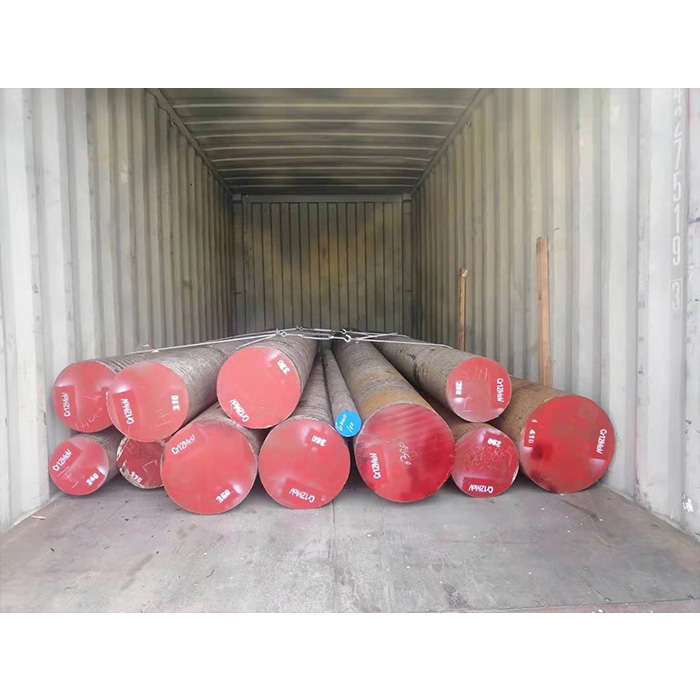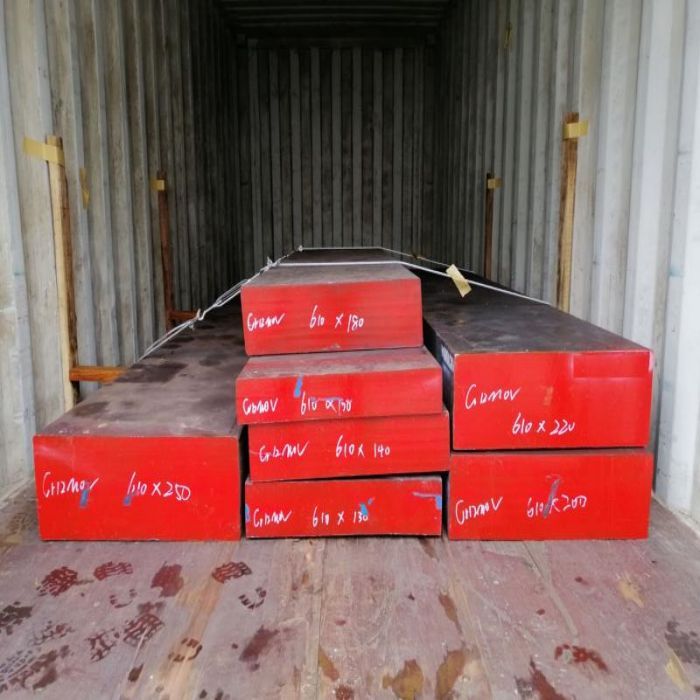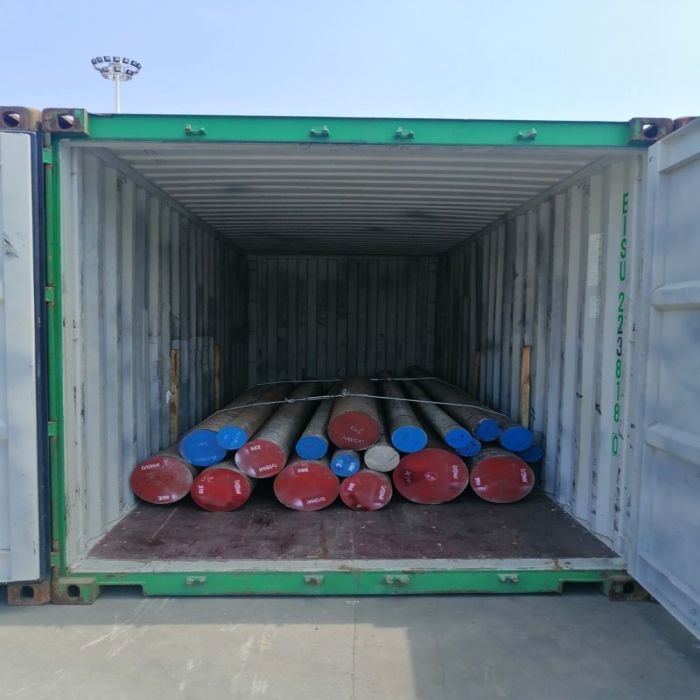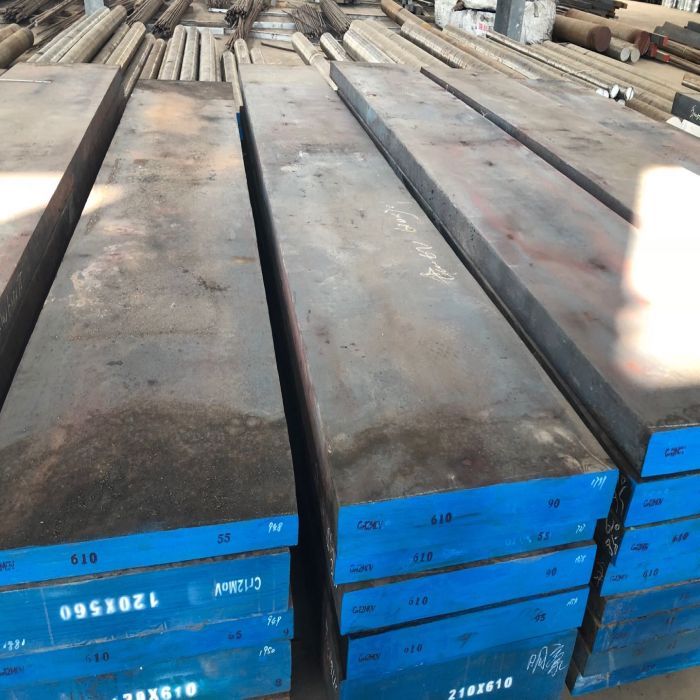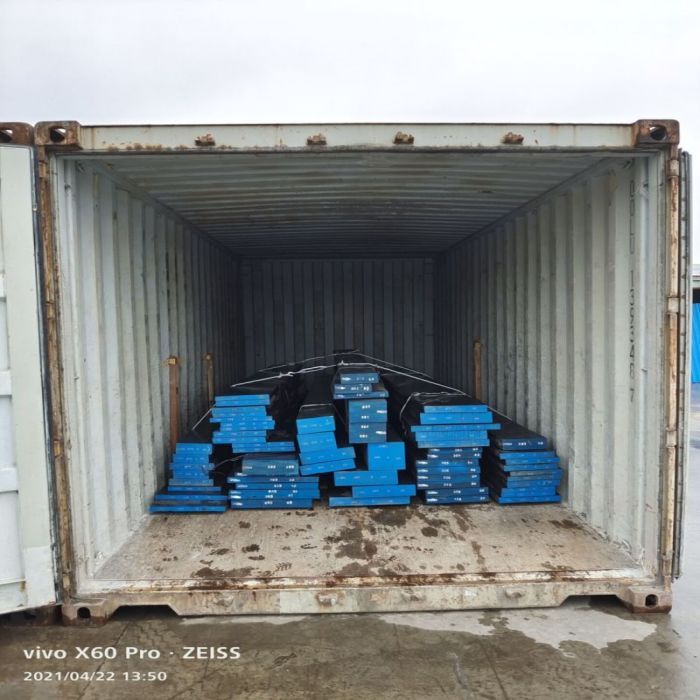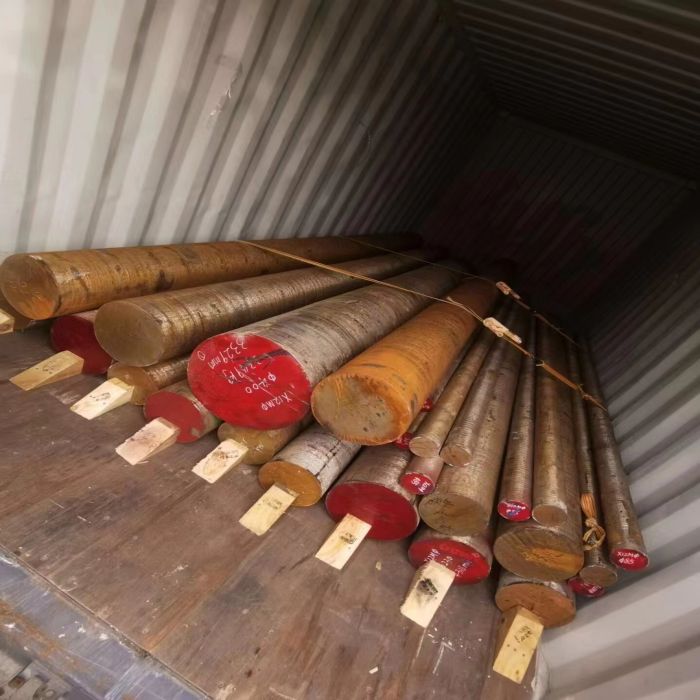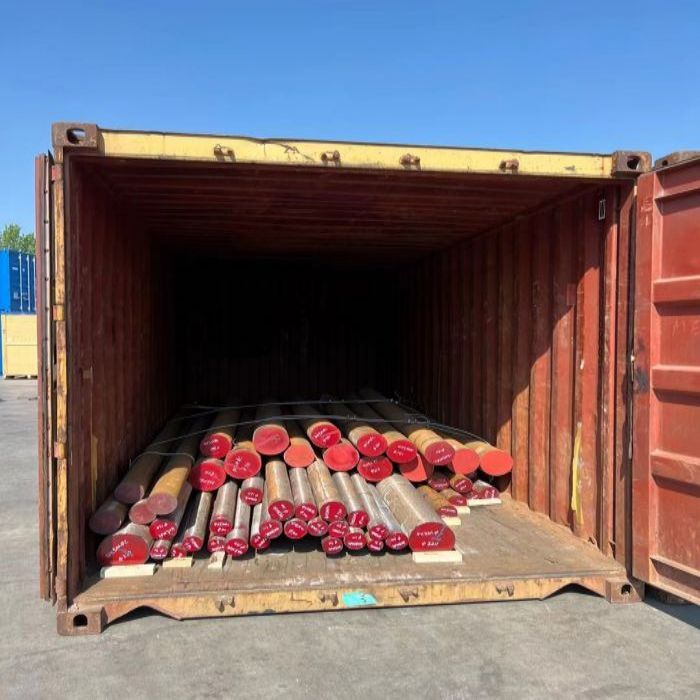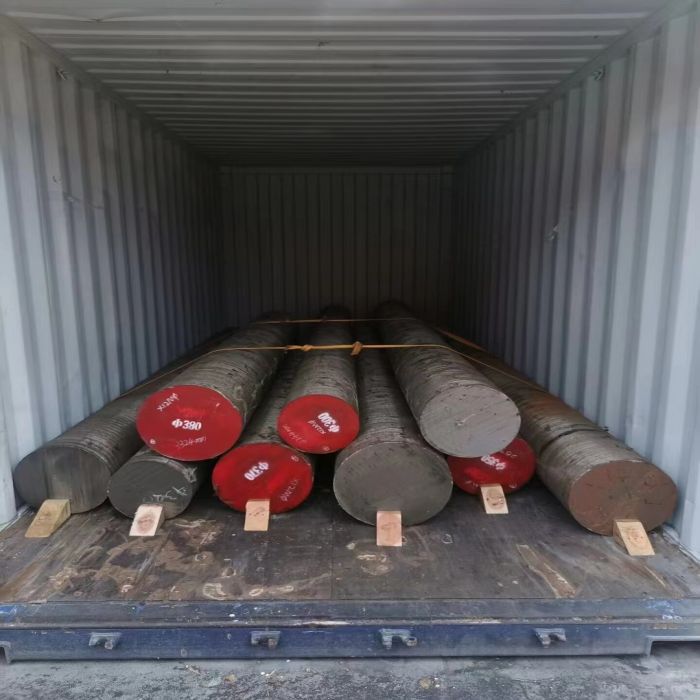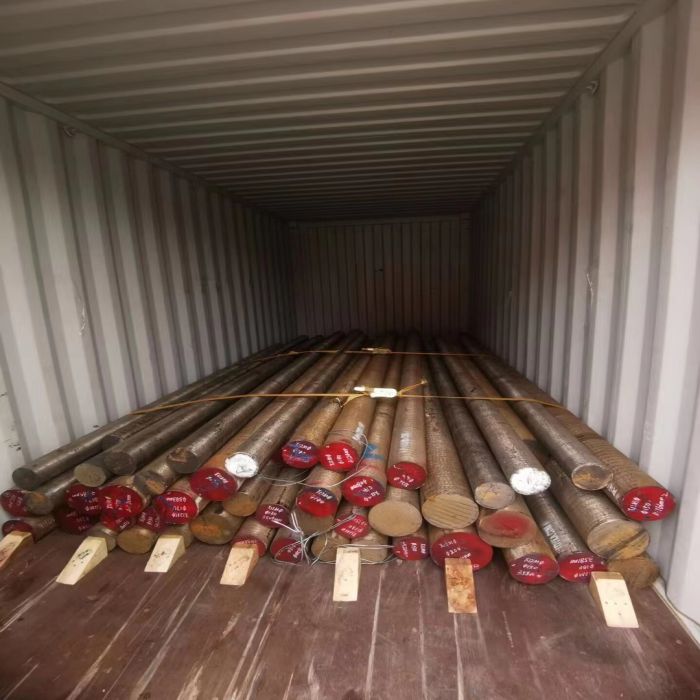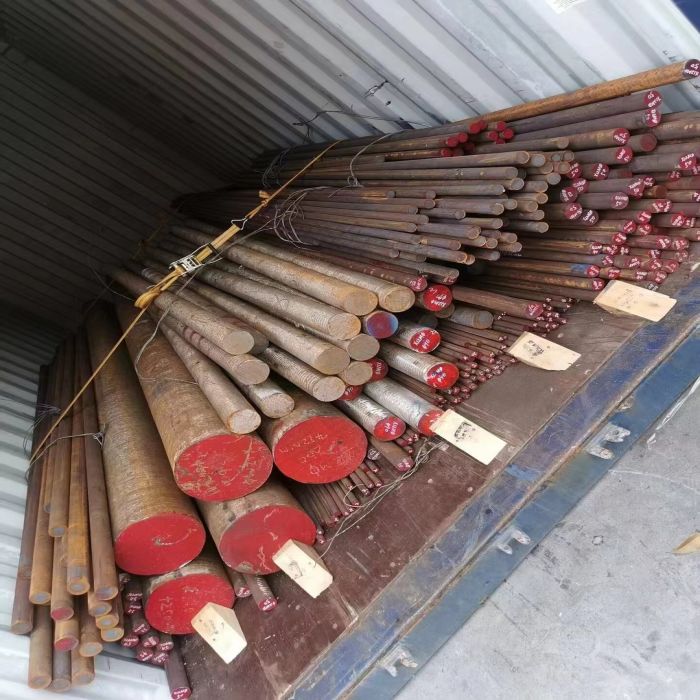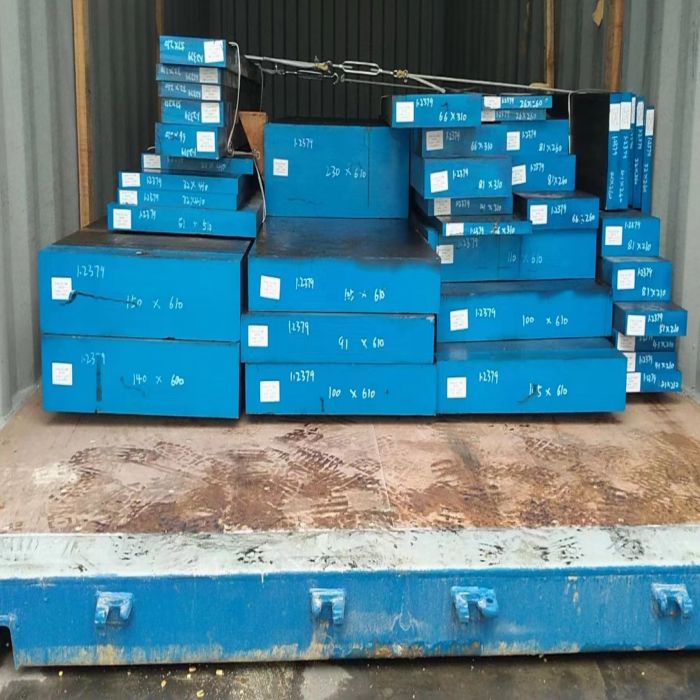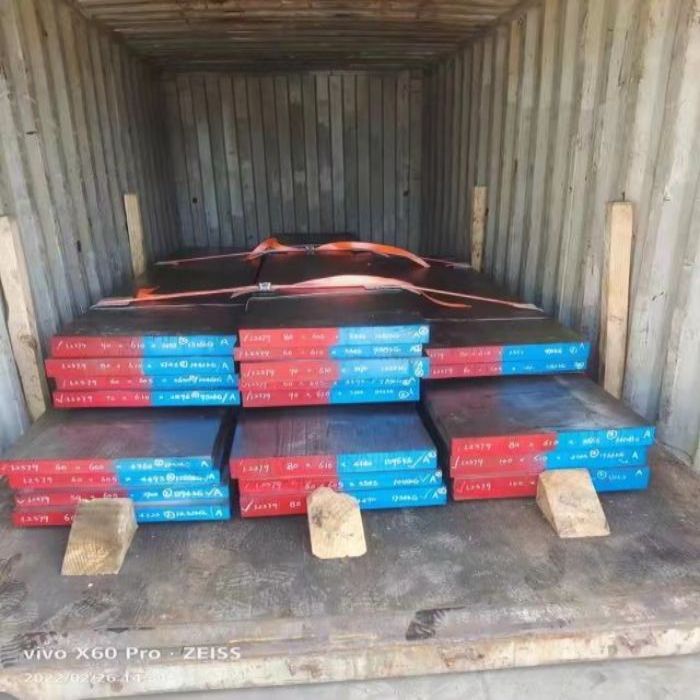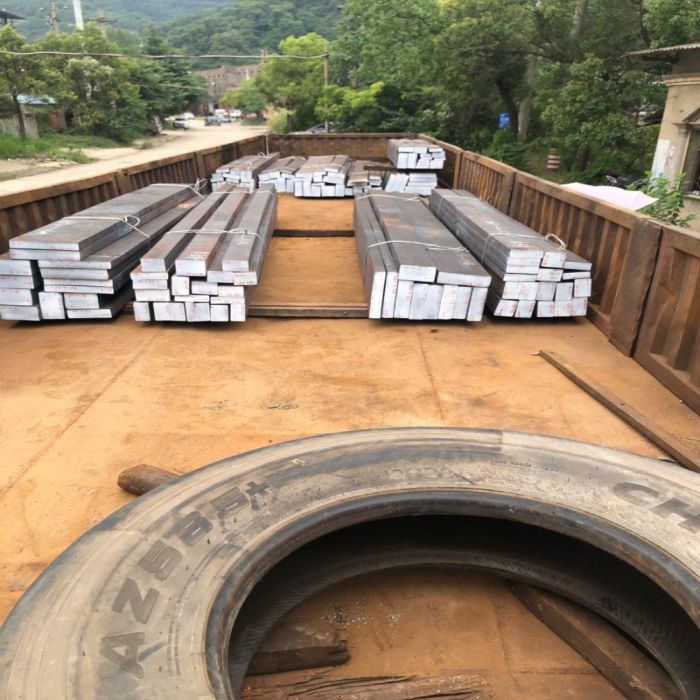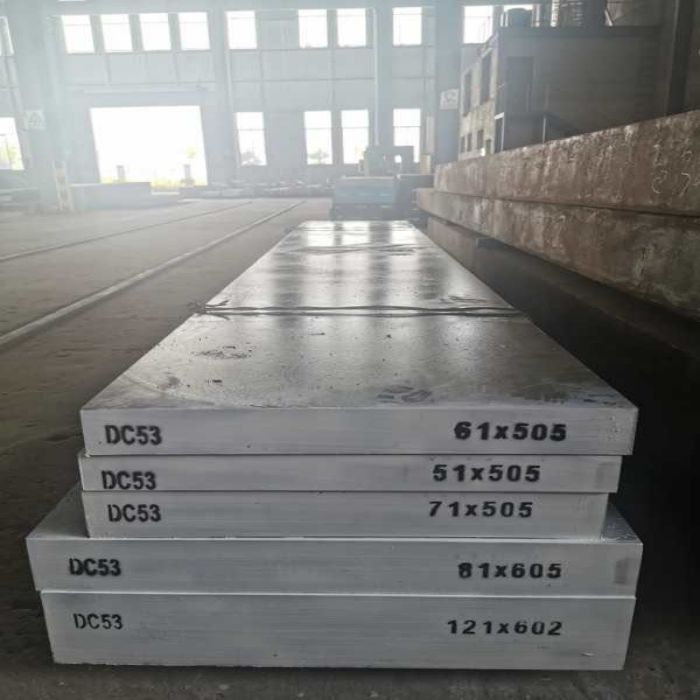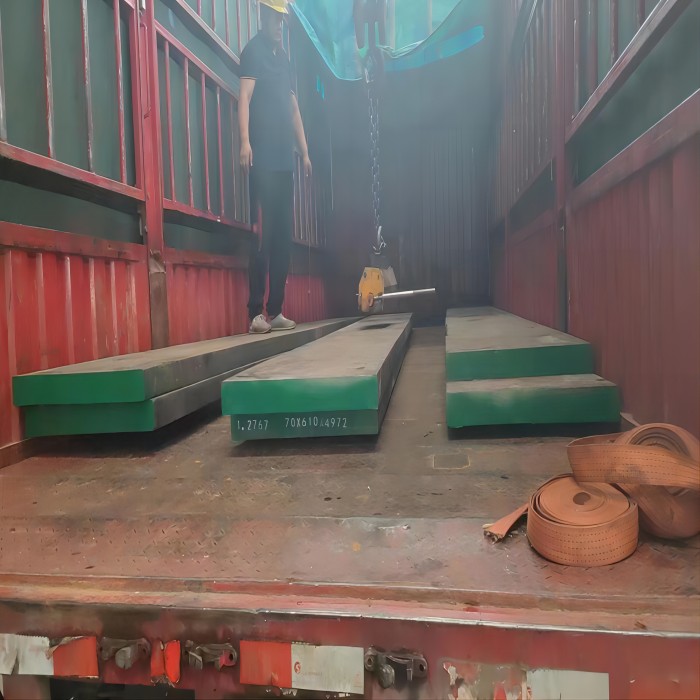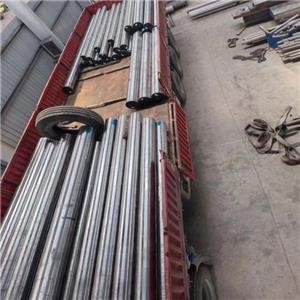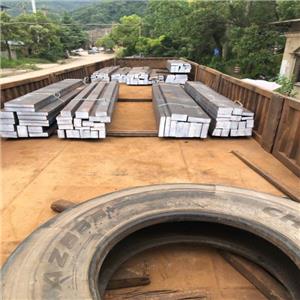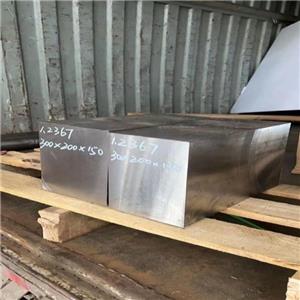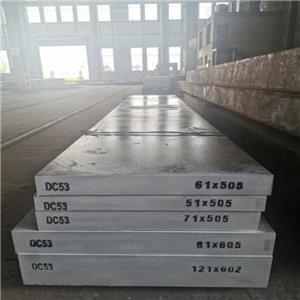Cr12MoV forged flat

- pinxin
- huangshi
- within 30-45days
- 5000 Ton/Tons per Month
Cold work die steel, the hardenability of steel, the hardness of quenching and tempering, wear resistance and strength are all higher than that of D3. Various cold-punching dies and tools with complex shapes and heavy working conditions, such as punching dies, trimming dies, hemming dies, steel deep drawing dies, circular saws, standard tools and gauges, thread rolling dies, etc.
Cr12MoV Chemical Analysis (%):
| C | Mn | Si | Cr | V | Mo | P | S |
| 1.50-1.70 | ≤0.40 | ≤0.40 | 11.0-12.5 | 0.15-0.30 | 0.40-0.60 | ≤0.03 | ≤0.03 |
Cr12MoV Scope of application
Cold work die steel, the hardenability of steel, the hardness of quenching and tempering, wear resistance and strength are all higher than that of D3. Used to manufacture various cold punching dies and tools with large cross-sections, complex shapes and heavy working conditions, such as punching dies, trimming dies, hemming dies, deep drawing dies for steel plates, circular saws, standard tools and gauges, Thread rolling die, etc.
Cr12MoV Availability
Supply varieties include hot-rolled materials, forging materials, cold-drawn materials, hot-rolled steel plates and cold-drawn steel wires
Cr12MoV Corresponding grade
China GB standard grades: Cr12mov, China Taiwan cNS standard grade SKD11, German DlN standard material number 1.2601, German DIN standard grade x165CrMoV12, Japanese Jis standard grade sKD11, South Korea Ks standard grade sTD11, Italian UN1 standard grade x165CrM0W12KU, Sweden SS standard grade 2310, Spanish UNE standard grade X160CrM0V12, American AISi/sAE standard grade D2, Russian roCT standard grade X12M.
Cr12MoV Physical properties
Electric furnace vacuum refining production, forging billet, uniform eutectic carbide, high hardenability, high wear resistance, high toughness, and small volume deformation during quenching; therefore, its market consumption is very large.
① Reduce the content of Cr, Mo, V elements, directly reduce the cost, and also seriously affect the performance, such as using Cr8, D3 as Cr12MoV;
② Change its production method, use intermediate frequency furnace instead of electric furnace refining, resulting in excessive component impurities, use continuous casting method to replace spheroidizing annealing, reduce rolling ratio and other methods to reduce costs, and ultimately the customer can not reach the material when using To the expected effect, the life of the mold is reduced, which will directly lead to cracking and scrapping.
Cr12MoV Mechanical properties:
Hardness: Annealing, 255-207HB (14-25BRC), indentation diameter 3.8-4.2mm; quenching, ≥60HRC
Uses of Cr12MoV
The hardenability, hardness, strength, and toughness of Cr12MoV die steel after quenching and tempering are higher than D3. Workpieces with a diameter of 300-400mm or less can be completely hardened, with small quenching deformation, but poor high-temperature plasticity. Cr12MoV is mostly used to manufacture composite molds and tools with large cross-sections, complex shapes, and heavy workloads. Such as punching die, trimming die, hemming die, steel plate, etc.
Cr12MoV Heat treatment specification
Heat treatment specifications:
1. Quenching, 950-1000℃ oil cooling;
2. Quenching 1020℃, tempering at 200℃ for 2h.
Metallographic structure: fine-grained pearlite + carbide.
Delivery status: The steel is delivered in an annealed state.
Specification for softening of cold extrusion moulded billets
Use iron filings to protect and heat, the temperature is 760-780°C, the time is 10h, the furnace is cold, the hardness is l96HBW, and the cold extrusion can be smoothly realized
Ordinary isothermal spheroidizing annealing specification
850~870℃×3-4h, cooling to 740-760℃×4-5h isothermal with the furnace, air cooling after the furnace, hardness ≤241HBW, eutectic carbide grade ≤3
The best isothermal temperature 740-760°C, time ≥4-5h
Spheroidizing annealing specification
(860±1ü)°C×2-4h, furnace cooling at 30°C/h cooling rate, (740±10)°c x 4-6h, slowly cooling with the furnace to 500~600°C, and air cooling after the furnace. Hardness 207 -255HBW.
